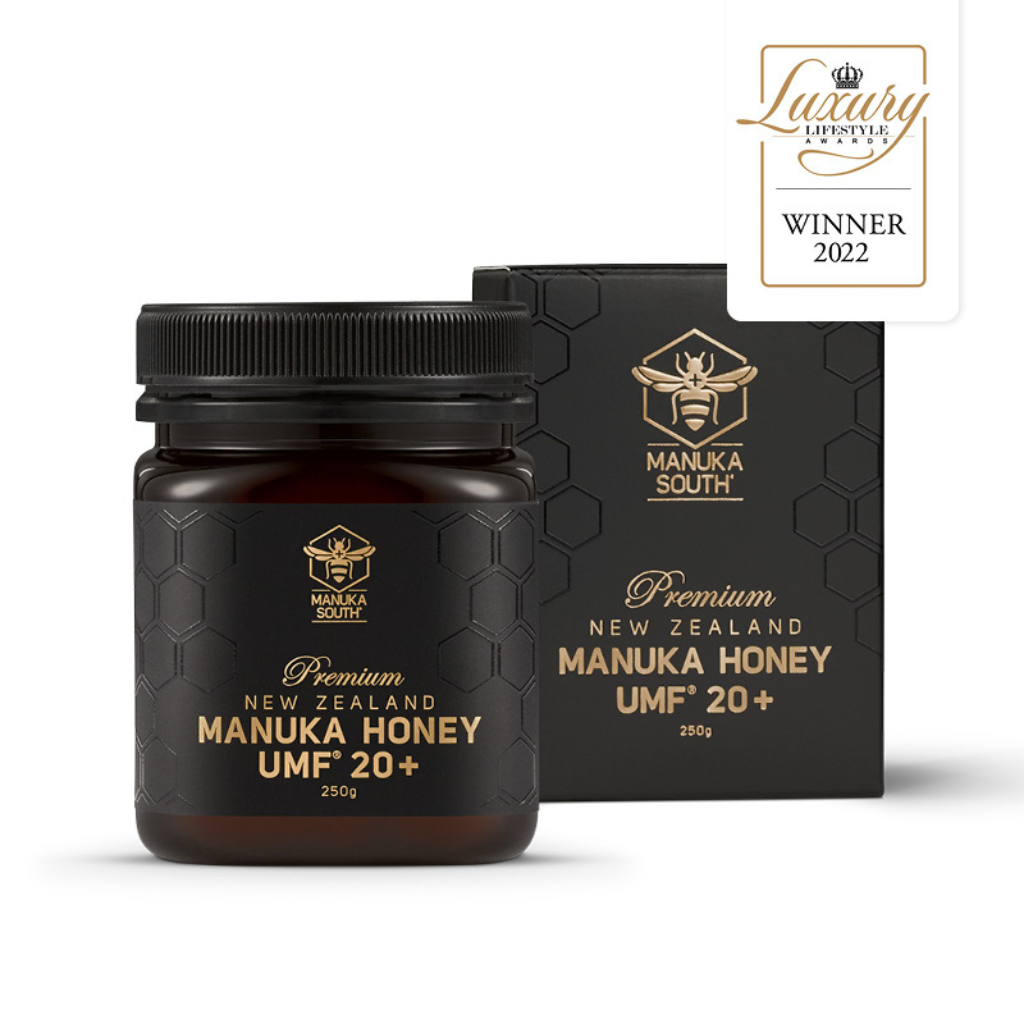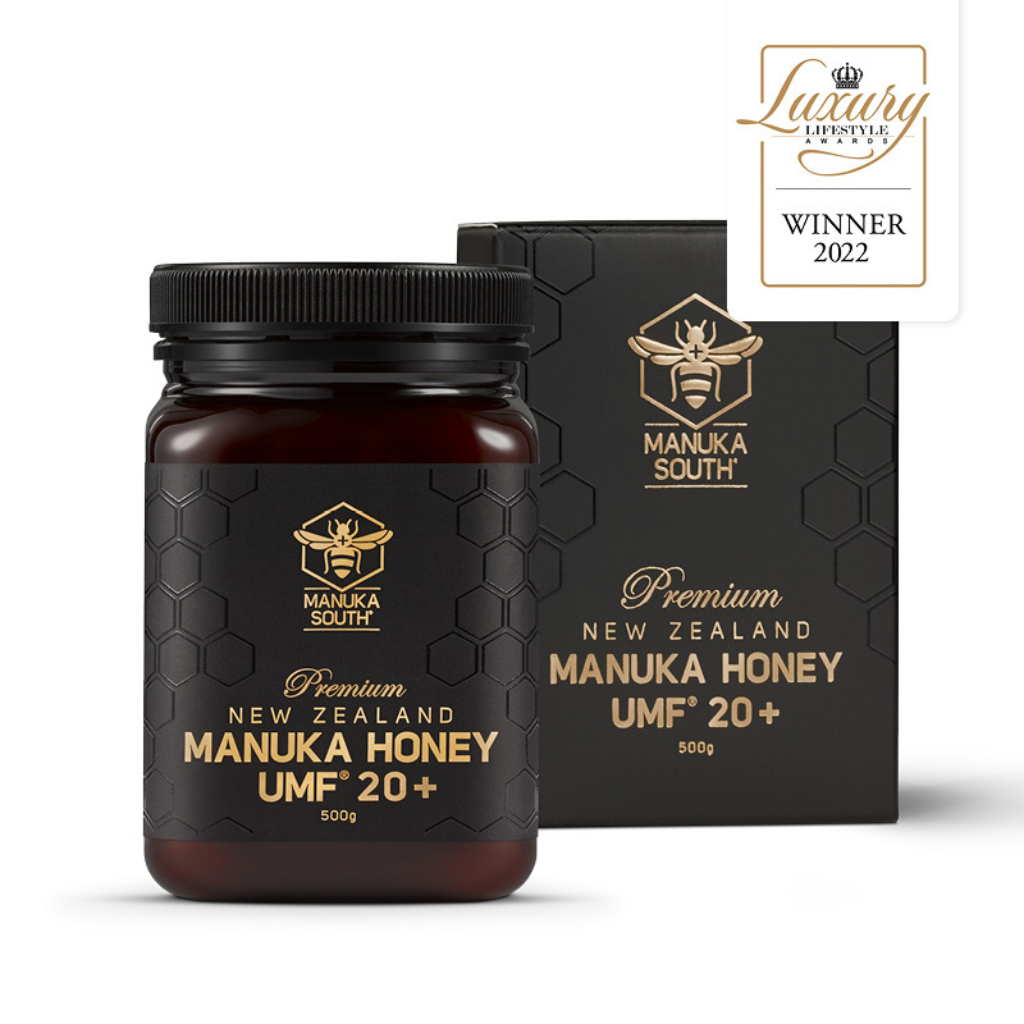Your Cart is Empty
Comparing Manuka Honey grading systems UMF, KFactor, MGS, MGO / MG and BioActive
Up until a few years ago, there were no grading regulations to help the confusion around Manuka Honey ratings. In 2018 the New Zealand government’s Ministry for Primary Industries (MPI) has introduced legal requirements for Manuka Honey labelling and with it definitions and standards for export Manuka Honey. Since then 5 attributes are needed to be fulfilled for Manuka Honey to be classified as such, which include 4 chemicals at a certain level as well as a DNA test:- 3-Phenyllacticacid
- 2’-Methoxyacetophenone (or 2-MAP)
- 2-Methoxybenzoic acid
- 4-Hydroxyphenyllactic acid
- DNA from Manuka pollen
This is the only government-regulated and approved standard for Manuka Honey in the world.
In addition to these requirements to be labelled Manuka Honey, there are several grading systems that also measure and grade the levels of the chemical markers Leptosperin, dihydroxyacetone(DHA) andMethylglyoxal or MGO (which is the active ingredient that is responsible for Manuka’sn on-peroxide activity or NPA). These chemical markers are those that are found to be so beneficial to our health.
The best Manuka honey grading systems will focus on conveying the strength of the non-peroxide activity (NPA) of the honey. The reason for this is that high levels of NPA are only found in Manuka honey. So, if the honey has a high level of NPA, you can be confident that it’s genuine Manuka honey.
The most commonly seen independent Manuka Honey grading systems include:
- UMF™ (Unique Manuka Factor)
- MGS (Molan Gold Standard)
- KFactor
- Bio Active
- MGO (Methylglyoxal)
- NPA
UMF™
The UMF™ or Unique Manuka Factor grading system is one of the best grading systems around. It is run by the Unique Manuka Factor Honey Association (UMFHA), which is a third party New Zealand organisation that oversees the use of the UMF trademark and honey quality testing. They also fund scientific research and continue to add to the body of knowledge around Manuka honey. There are two components which are expressed on any UMF honey product:- The label claim that it is genuine Mānuka Honey.
- The UMF rating number i.e. 10+UMF.This represents the key markers of Manuka Honey including DHA and Methylglyoxal (MGO) to determine its NPA which is arguably the most reliable method. It also tests for leptosperin, a natural compound unique to Manuka, to assure purity of the honey.
MGS
The MGS (Molan Gold Standard) grading system references naturally occurring Methylglyoxal that is present in genuine Manuka honey. The Molan Gold Standard is tested and certified by an accredited laboratory under the ISO 17025 Standard. The MGS grading system is a trustworthy grading system with independent tests and auditing to ensure the honey’s purity and quality. The MGS grading system establishes:- The label claim that it is Manuka
- The Methylglyoxal level is measured and shown on the label
- The Hydroxymethylfurfural level falls within the market guidelines
- The C4 sugar levels fall within the market guidelines
- The honey can be traced to the hive site(s)
- The honey has been processed in a NZ Government approved facility
- To receive a MGS grading, a honey must have the presence of Methylglyoxal. The MGS rating is a measure of the attributes and values that make up Manuka honey, and assures purity &quality.
KFactor™
The KFactor™ grading system was created and is only used by Wedderspoon. KFactor measures the amount of pollen in the honey but does not measure the antibacterial strength of the Manuka honey.- KFactor 12 represents Multifloral Manuka Honey based on pollen count
- KFactor 16 represents Monofloral Manuka Honey based on pollen count
Active / Bio Active / Total Activity
These grading systems refer to both the peroxide and non-peroxide activity of the honey. Because of the quick degradation of hydrogen peroxide antibacterial activity when exposed to fluids (i.e. saliva), heat, and sunlight this is not an ideal measurement.
Avoid honeys that are labelled with ‘Active’ or ‘BioActive’. These labels are misleading and are unlikely to offer any of the antibacterial benefits Manuka honey is known for.


















